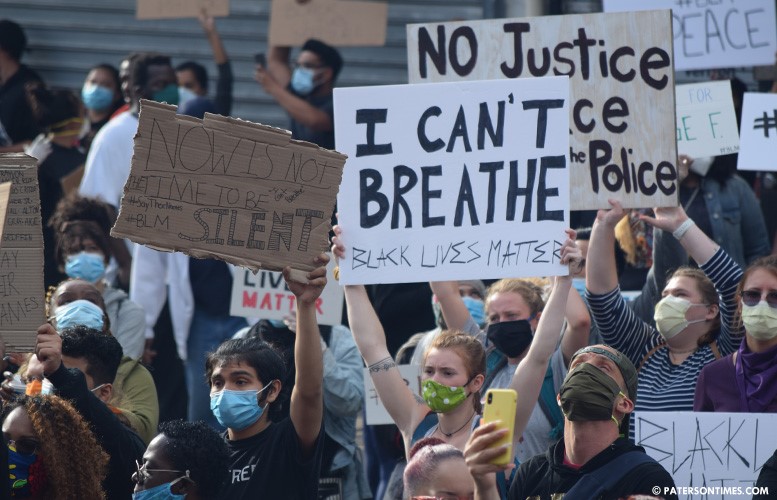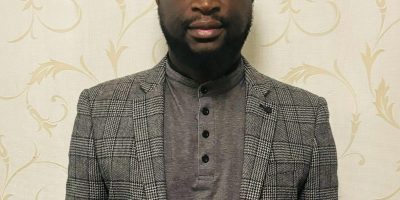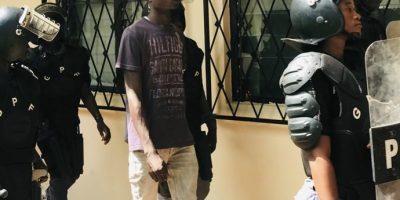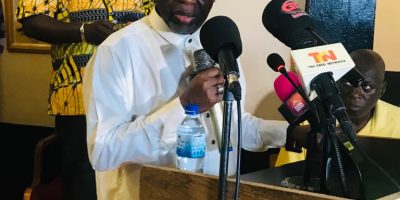 by Alagi Yorro Jallow.
by Alagi Yorro Jallow.
Within ten days of sustained protests:
Minneapolis bans use of chokeholds.
George Floyd’s murderer was initially charged with 3rd-degree murder. He is now being charged with 2nd-degree murder.
The other three officers who stood on the scene and did NOTHING to help Floyd are being charged with aiding and abetting 2nd-degree murder.
Breonna Taylor’s Case has been reopened.
Louisville, KY’s mayor, is ordering an outside review of the entire city police department.
Dallas adopts a “duty to intervene” rule that requires officers to stop other cops who are engaging in inappropriate use of force.
New Jersey’s attorney general said the state would update its use-of-force guidelines for the first time in two decades.
In Maryland, a bipartisan workgroup of state lawmakers announced a police reform workgroup.
A seminar scheduled in December for K.C. police that trains cops to kill without hesitation was canceled.
Los Angeles City Council introduces motion to reduce LAPD’s $1.8 billion operating budget.
MBTA in Boston agrees to stop using public buses to transport police officers to protests.
Police brutality captured on cameras leads to near-immediate suspensions and officers’ firings in several cities (i.e., Buffalo, Ft. Lauderdale).

Monuments celebrating confederates are removed in cities in Virginia, Alabama, and other states.
James Miller resigned from his role in the Defense Advisory Board at the Pentagon in response to the Secretary of Defense’s support of LEOs clearing out White House protestors with tear gas so Trump could take a publicity photo.
Defense Secretary Mark Esper said he would oppose Trump’s threats to deploy federal troops to stop protestors across the U.S.
The Street in front of the White House is renamed “Black Lives Matter Plaza.”
Military forces begin to withdraw from D.C.
Globally:
Protests against racial inequality sparked by the police killing of George Floyd are taking place all over the world.
Rallies and memorials have been held in cities across Europe and in Mexico, Canada, Brazil, Australia, and New Zealand.
As the U.S. contends with its second week of protests, racism, police brutality, and oppression have been brought to light across the globe.
People all over the world understand that their fights for human rights, for equality and fairness, will become so much more difficult to win if we are going to lose America as the place where ‘I have a dream’ is a real and universal political program,” Wolfgang Ischinger, a former German ambassador to the U.S., told the New Yorker.
In France, protesters marched holding signs that said “I can’t breathe” to signify both the words of Floyd and the last words of Adama Traoré, a 24-year-old black man who was subdued by police officers and gasped the sentence before he died outside Paris in 2016.
Cities across Europe have come together after the death of George Floyd:
In Amsterdam, an estimated 10,000 people filled the Dam square on Monday, holding signs and shouting popular chants like “Black lives matter,” and “No justice, no peace.”
In Germany, people gathered in multiple locations throughout Berlin to demand justice for Floyd and fight against police brutality.
A mural dedicated to Floyd was also spray-painted on a stretch of wall in Berlin that once divided the German capital during the Cold War.
In Ireland, protesters held a peaceful demonstration outside of Belfast City Hall, and others gathered outside of the U.S. embassy in Dublin.
In Italy, protesters gathered and marched with signs that said, “Stop killing black people,” “Say his name,” and “We will not be silent.”
In Spain, people gathered to march and held up signs throughout Barcelona and Madrid.
In Athens, Greece, protesters took to the streets to collectively hold a sign that read, “I can’t breathe.”
In Brussels, protesters were seen sitting in a peaceful demonstration in front of an opera house in the center of the city.
In Denmark, protesters were heard chanting “No justice, no peace!” throughout the streets of Copenhagen, while others gathered outside the U.S. embassy.
In Canada, protesters were also grieving for Regis Korchinski-Paquet, a 29-year-old black woman who died on Wednesday after falling from her balcony during a police investigation at her building.
In New Zealand, roughly 2,000 people marched to the U.S. embassy in Auckland, chanting and carrying signs demanding justice.
Memorials have been built for Floyd around the world, too. In Mexico City, portraits of him were hung outside the U.S. embassy with roses, candles, and signs.
In Poland, candles and flowers were laid out next to photos of Floyd outside the U.S. embassy.




Ma sha Allah great and thanks for sharing